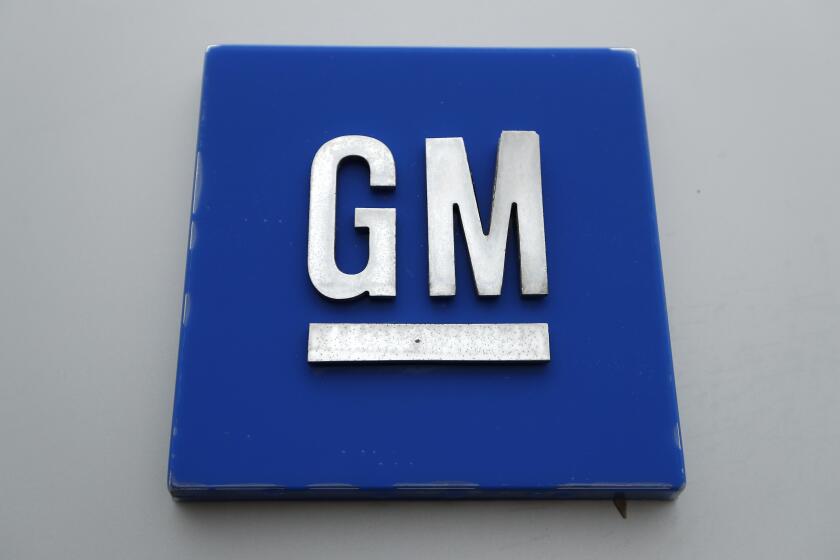Facebook’s Zuckerberg offers plan to counter fake news sites
- Share via
Facebook founder Mark Zuckerberg has outlined a seven-point plan to combat fake news sites that played a role in the recent election.
The social media site will attempt to hit the fake news purveyors where it hurts, by interrupting the way these users generate revenue through advertising. In addition, the company will devise algorithms based on users’ flags of false content to help detect future content likely to be fake, and then remove it.
Zuckerberg said Facebook employees were not trying to be “arbiters of truth,” but instead would rely on users to moderate the vast content on the site.
“We believe in giving people a voice, which means erring on the side of letting people share what they want whenever possible,” Zuckerberg said in a post published on the site late Friday night. “We need to be careful not to discourage sharing of opinions or to mistakenly restrict accurate content.”
The company will make it easier for users to report and flag fake stories, and explore ways to include warnings to future readers of that content. It also will reach out to additional third-party organizations to help vet claims made in stories, and will “raise the bar” for how stories are displayed as “related content.”
The announcement came as Zuckerberg flew to Peru to address an Asian-Pacific trade summit in Lima, where he told world leaders Saturday that more connectivity would help raise people out of poverty.
Zuckerberg has been under public pressure since the election, as some observers have suggested that fake news circulated through Facebook may have influenced voters who chose Donald Trump for president. President Obama has said the wide dissemination of false news presents a threat to democratic institutions.
Zuckerberg initially dismissed the notion that misinformation drove voters’ choice, calling it a “crazy idea” and saying that 99% of the content on the site was reliable. He changed course, however, soon after Google announced it would ban fake news sites from using its advertising services.
Zuckerberg’s subsequent proposal to ban such users from its own advertising network drew criticism from analysts, who argued that most false news sites don’t use the service.
Fake news organizations usually run ads on their own sites, using marketing services such as Google AdSense, to place those ads around their articles. They then steer readers to their stories through Facebook.
Most of the fake news services have little or no name recognition and rely on social media to find an audience and generate the clicks that help generate ad revenue. Facebook’s algorithm acts as a catalyst, spreading the content to other users’ news feeds as it rises in popularity.
One such ad scheme generated lucrative revenue for a group of young people in the Macedonian town of Veles, who had launched more than 140 fake news sites, Buzzfeed reported.
Among the false stories from that network was a report that presidential candidate Hillary Clinton would be indicted in 2017. It generated more than 140,000 shares, comments and reactions on Facebook, Buzzfeed reported.
Another false story suggested that Clinton in 2013 had said she thought Trump was “honest” and should be elected president. It drew more than three times that activity on Facebook.
Among those who praised Zuckerberg’s moves was Jeff Jarvis, director of the Tow-Knight Center for Entrepreneurial Journalism at the City University of New York.
Jarvis co-wrote his own plan, published Friday on Medium, that cautioned against censorship by the platform itself, including creation of blacklists of suspect sites and “whitelists” of reliable ones.
Jarvis urged Facebook to make it easier for readers to scroll over an article to see pop-up content that refutes its claims, and to provide a path for reputable news agencies and fact-checking groups to post that refuting information and its source.
Jarvis also suggested that Facebook more prominently display reliable media “brands,” such as large-circulation newspapers, and offer simple ways to track back to the original source of content so that users may judge its objectivity or reliability.
Follow me: @LATgeoffmohan
ALSO
Editorial: Having Google and Facebook censor content is no way to stop fake news
Facebook bans fake news from its advertising network — but not its News Feed
Want to keep fake news out of your newsfeed? College professor creates list of sites to avoid
More to Read
Inside the business of entertainment
The Wide Shot brings you news, analysis and insights on everything from streaming wars to production — and what it all means for the future.
You may occasionally receive promotional content from the Los Angeles Times.











